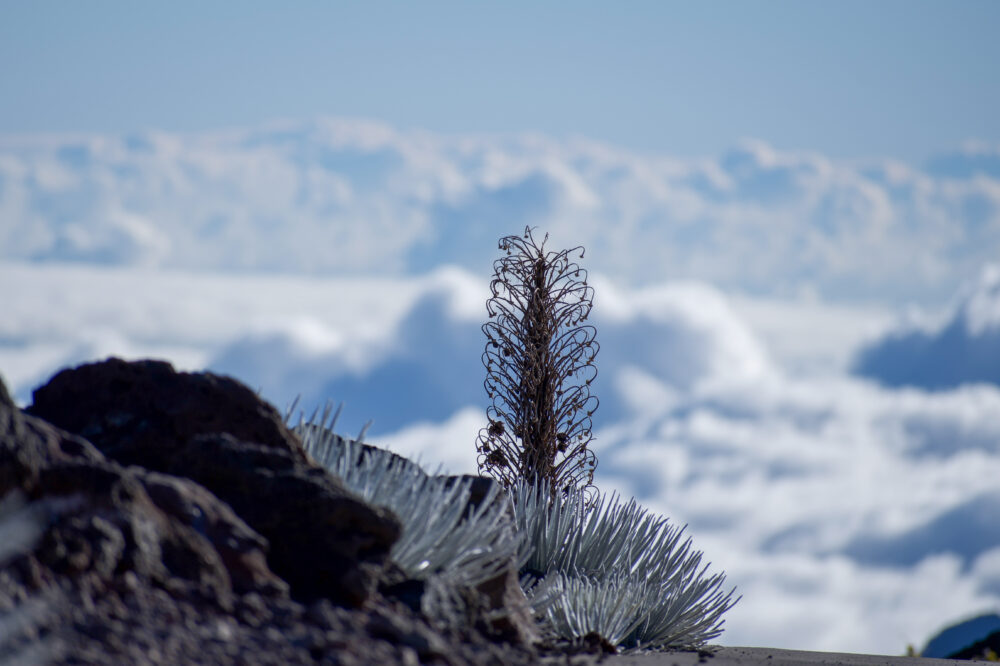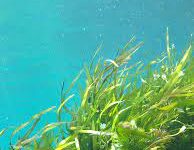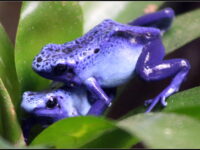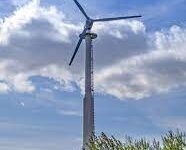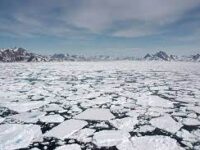Stars flicker faintly as the dark horizon reddens. Howling, freezing winds and desolate craters starkly contrast the lush tropical rainforests and coral gardens 10,000 feet below. As the blinding light finally emerges over a sea of swirling clouds, a bright reflection appears from the sparse, reddish slopes. It is a silver plant, radiating under the climbing sun.
Born from volcanoes and spanning seven distinct climate zones, the Hawaiian Archipelago is home to some of the most biodiverse landscapes on Earth. Due to geographic isolation, Hawaiʻi also has one of the highest densities of endemic species in the world, which means they are found nowhere else. A prime example is the Hawaiʻi silversword, or ‘āhinahina (literally meaning “very gray”). The two subspecies of this resilient plant only grow in alpine cinder deserts atop Hawaiʻi’s tallest volcanoes — Maui’s dormant Haleakalā and Mauna Kea and Mauna Loa on the island of Hawaiʻi.
The ‘āhinahina biology and life cycle are specialized to the extremes of a high-altitude, volcanic climate. Its spiral shards coated in reflective, silvery hairs act as mirrors, refracting sunlight to the center of the plant’s rosette. This spherical structure and tough, succulent-like leaves raise the temperature of the shoot tips to 68 degrees Fahrenheit, allowing the plant to resist the shearing winds, dryness, and freezing temperatures of Haleakalā’s summit. The Mauna Kea silversword is genetically distinct with thinner and straighter florets than the Haleakalā subspecies. When the plants reach maturity after 10-30 years (and a diameter of 1.6 feet), they grow a 6.6-foot stalk that blooms up to 600 heads of maroon flowers for a few weeks between July and October. Sticky hairs also coat the stalk to prevent premature damage from insects before the crucial seed maturation period. After pollination by native insects like the Haleakalā yellow-faced bee, the plants bloom only once in their 90-year life spans, then wither, seed, and die.
Despite their ability to thrive in a seemingly rugged and inhospitable environment, the ‘āhinahina is one of the rarest plants in the world and critically endangered. Their rhizome-like root systems are shallow and radiate out from the rosette to readily capture moisture in the loose sand. This makes the structures extremely delicate — stepping within 5 feet of the plant can crush and kill them. Ungulates like cattle and sheep introduced by European colonizers heavily grazed and trampled the ‘āhinahina, while tourists ripped out the plants as souvenirs, dried them as decoration, and even used them as kindling. Now that the ‘āhinahina’s habitat is controlled by Haleakalā and Hawaiʻi Volcanoes National Parks, the plants are federally protected and fenced off to prevent grazing animals, invasive plants, and visitors from stepping on seedlings. Researchers have also collected and reintroduced more than 32,000 Mauna Loa silversword seedlings with a survival rate of over 70% since 2007.
“Only by fostering research, awareness, and legislation can we protect these most precious ʻāina (“land” in Hawaiian) for millennia to come.
The existential threat of introduced invasive species alleviated by successful conservation efforts to restore the ‘āhinahina mirrors that of countless species throughout Hawaiʻi. From the state bird nene to the ʻōhiʻa lehua, a colonizer plant of lava, Hawaiʻi’s wildlife is returning from the brink of man-made extinction. However, climate change now poses a new threat, creating droughts and a hotter climate that threaten the highly specialized ‘āhinahina. Only by fostering research, awareness, and legislation can we protect this precious ʻāina (“land” in Hawaiian) for millennia to come.
